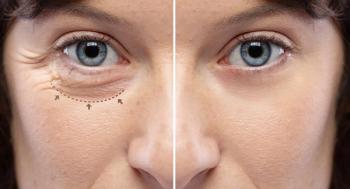
CAV1 activity in TM cells may be the link to new therapeutics in glaucoma
Researchers note work may lead to targets for conventional outflow pathway therapies.
Reviewed by Rashad Rahman and W. Daniel Stamer, PhD
As researchers unlock mysteries surrounding the caveolin-1 (CAV1) scaffolding protein in the cells of the trabecular meshwork (TM), their efforts may lead to new therapies to enhance the conventional outflow pathway in patients with glaucoma.
Mutations at the CAV1 locus have been linked to higher IOP and glaucoma risk.1 Researchers from Duke University in Durham, North Carolina, and the University of Oklahoma Health Sciences Center in Oklahoma City reported at the Association for Research in Vision and Ophthalmology (ARVO) 2024 Annual Meeting in Seattle, Washington, that CAV1 and Rho-associated kinase 1 (ROCK1) were consistently associated following mechanical stress, which may affect cellular contractility.
Rashad Rahman, a medical student at Duke University, explained in the ARVO presentation that conventional outflow pathway cells respond to biomechanical stimuli with changes in contractility and that these changes are known to impart greater risk for ocular hypertension and glaucoma pathology. However, knowledge about the underlying mechanism driving these responses is limited. A better understanding can lead to the development of new pharmacotherapies that can target the conventional outflow pathway to treat glaucoma.
CAV1 study design
Caveolae proteins, including CAV1, act as mechanosensors in the conventional outflow pathway, detecting and adapting to mechanical stimuli. The investigators hypothesized that the CAV1 interactome in the TM changes in response to mechanical stress and set out to clarify how the CAV1 interactome changes in the presence and absence of mechanical stress. Rahman explained that primary human TM cells were isolated, cultured and characterized, and plated at confluence. The plates were subjected to either 1 hour of cyclic mechanical stretch to simulate stress or left unstretched as a control.
The cells were lysed, and equal protein concentrations were used with magnetic beads to perform immunoprecipitation (IP) for CAV1. CAV1 and its binding proteins were determined by
mass spectrometry and confirmed by immunoblotting.
Four major findings
1. Successful IP of CAV1 from TM cells
The immunoblots for CAV1 confirmed the success of the IP, with minimal residual CAV1 being seen in the flow-through and on the beads.
2. TM cell CAV1 interactome in the absence of mechanical stress
CAV1 was not seen in a consistent relationship with any other cellular component.
3. CAV1 interactome in the presence of mechanical stress
The CAV1 interaction was shown to change in the presence of stretch. The investigators observed a consistent association of ROCK1 with CAV1 after mechanical stress, suggesting an effect on cell contractility.
4. Confirmation of known binding partners of CAV1 with and without mechanical stress
Caveolae-associated proteins, CAV2, and polymerase I and transcript release factor were confirmed to bind to CAV1, with potentially higher affinity in stretched lysates.
“Studying changes in the CAV1 interactome can lead to a better understanding of TM-mediated adjustments to mechanical stress and new targets for conventional outflow pathway therapies,” Rahman and his colleagues concluded.
Rashad Rahman
Rahman has no financial disclosures related to the content of this article. This article is based on a presentation at the Association for Research in Vision and Ophthalmology 2024 Annual Meeting, held from May 5 to 9 in Seattle, Washington.
W. Daniel Stamer, PhD
Stamer has no financial disclosures related to the content of this article. Stamer, along with coauthor Michael H. Elliott, PhD, FARVO, was awarded a $2.4 million grant from the National Institutes of Health/National Eye Institute to study caveolae-based mechanosensors for conventional outflow regulation in ocular function.
Reference
Loomis SJ, Kang JH, Weinreb RN, et al. Association of CAV1/CAV2 genomic variants with primary open-angle glaucoma overall and by gender and pattern of visual field loss. Ophthalmology. 2014;121(2):508-516. doi:10.1016/j.ophtha.2013.09.012
Newsletter
Don’t miss out—get Ophthalmology Times updates on the latest clinical advancements and expert interviews, straight to your inbox.













































.png)


